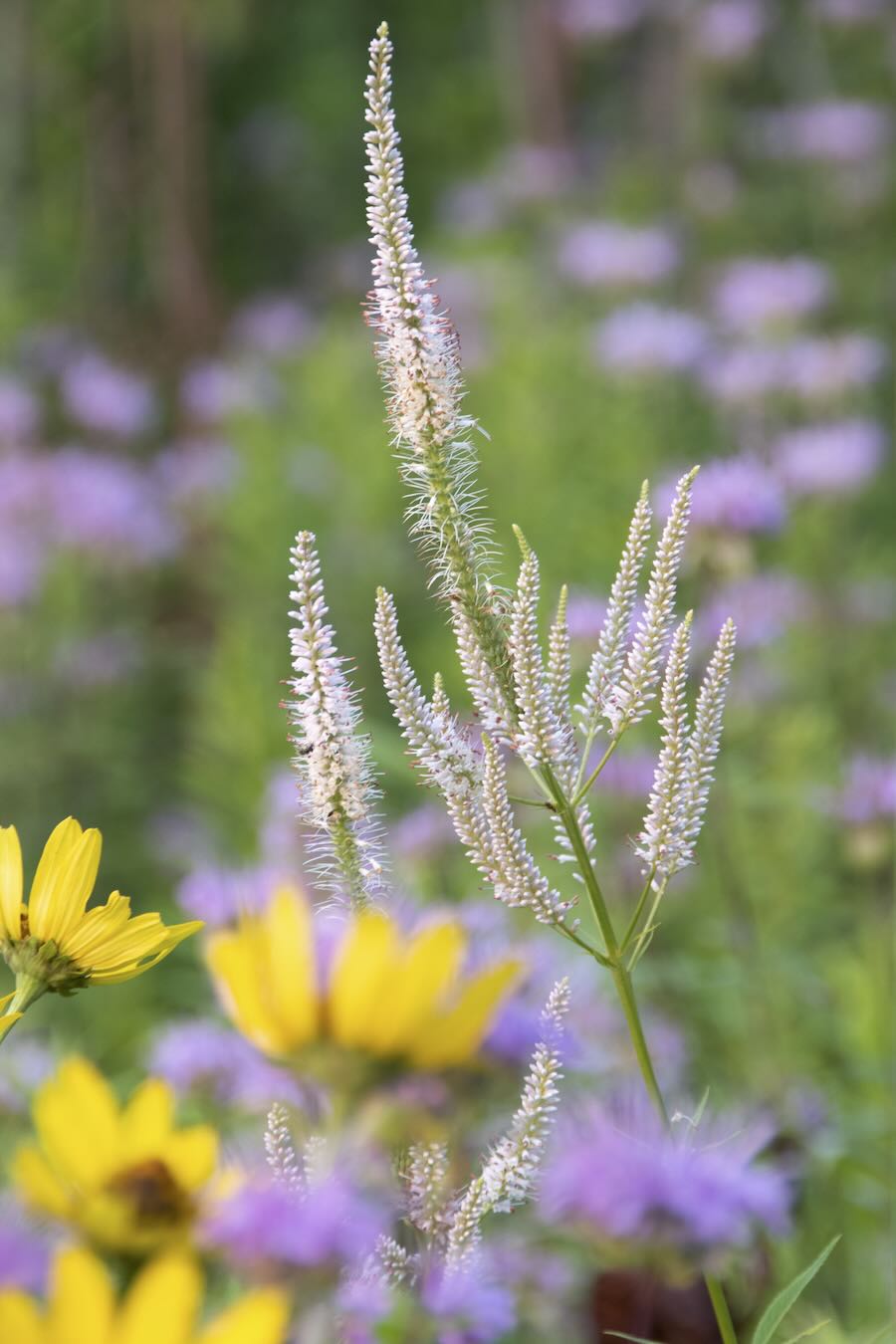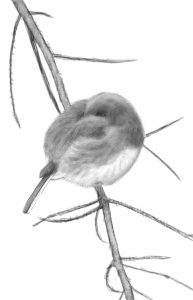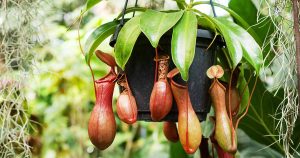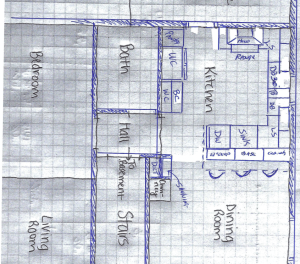
INTEREST AND AWARENESS around native plants has been trending in recent years, and it makes them feel almost new. But of course natives are the original plants of an area, and even in certain specialty corners of the nursery industry, they’ve been around far longer than they’ve been making headlines.
Just ask today’s guest, Neil Diboll, who has operated Prairie Nursery in Wisconsin for 42 years, since long before phrases like “pollinator garden” were fashionable. He’ll share some of his favorite species you may not know, and also some advice for how to prepare a site for meadow- and prairie-style plantings in case you’re among those gardeners considering transitioning part of your lawn, for instance.
Neil has been president and consulting ecologist for Prairie Nursery in Westfield, Wisc., since 1982. Last year, in collaboration with garden designer and horticulturist Hilary Cox, he published “The Gardener’s Guide to Prairie Plants” (affiliate link), a comprehensive guide to using prairie plants in gardens and larger restorations. (Above, Culver’s root, Veronicastrum virginicum.)
Plus: Comment in the box near the bottom of the page to enter to win a copy of the book.
Read along as you listen to the June 3, 2024 edition of my public-radio show and podcast using the player below. You can subscribe to all future editions on Apple Podcasts (iTunes) or Spotify (and browse my archive of podcasts here).
talking prairie plants, with neil diboll
Margaret Roach: I love the book, Neil; it’s so serious, but also accessible. I don’t know if you can be both things at the same time, but somehow it is. So congratulations on that.
Neil Diboll: Thank you.
Margaret: So we did a recent “New York Times” garden column together, but that wasn’t the first time I met you. I met you 30-something years ago when I was working on a book called “The Natural Habitat Garden” with Ken Druse, and we came to visit you and learn about all things prairie from you. And back then, natives, you reminded me when we worked on the recent Times piece, were more likely to be considered weeds than fashionable [laughter]. Yes?
Neil: Oh, yes, yes. Let’s just say we were a little ahead of the curve on this. So there was some pretty hard years trying to convince people to use natives when they weren’t accustomed to knowing anything about them.
Margaret: Yeah, we’ve come a long way, but it feels somehow to me—I guess because I get a lot of reader and listener questions—it feels to me like in the mainstream horticulture marketplace, the research and development and marketing efforts have been really to invent flashy new forms of natives and sell, sell, sell them maybe more than to educate the customers. And I know you think education is one of the most important parts, and I totally agree, hearing what people are confounded by.
Neil: Yeah, education is super-important, especially when 40 years ago we had a product that nobody knew about, and so we had to educate. And in order for people to use your product properly, to use these plants properly, you need to make sure they understand them and how they interact with each other.
So gardening with native prairie plants, people can create mini-ecosystems or plant communities, and that’s really a radical concept because now you’re not just plunking in a plant like this or a plant like that, but you’re actually using a native ecosystem as your model for a garden. And so rather than recreating nature in our own image, if you will, we are using nature’s principles to create a model of nature. So rather than a homocentric garden, it’s a more of a nature-centric model. And that really helps to inform gardeners as far as how to use these plants and how to use them to create low-maintenance, high-quality habitat.
Margaret: And just to that point that you’re making, I mean, when we long-time gardeners, even experienced, expert gardeners, we would buy our hostas and our astilbe and our this and that. I just mentioned some shade plants, but I could mention sun plants, too. We put them down and 30 years later, they’re essentially in the same place that they used to be [laughter]. You know what I mean? We knew how to manage them, we knew what they needed. We knew when to cut them back. We kind of knew the routine. They were the familiar palette. And these are not necessarily.
And as you’re pointing out, we’re not just plunking things down, “Ooh, look, that’ll look pretty over here, and this will look pretty over there,” we’re creating communities. And that’s a whole different mindset. So I get a lot of questions from people who are thrown off by, well, how do I make this all work? It’s a little confusing.
Neil: And it helps to know your plants, and many gardeners know their plants phenomenally well, but they’re just different plants. And so what we’re seeing now is that serious gardeners are getting to know native plants and applying ecological principles in how they design with them, how they manage them, etc.
Especially beyond just the use of the plants as something aesthetic for human beings, but rather as a habitat garden, and what I call a joint venture with nature, where we meet nature halfway. So we invite nature into our gardens. And rather than spraying everything to keep the bugs off, we actually invite the bugs. Because in my garden or my meadows, if I don’t have holes in the leaves of my plants, I’m an utter failure as a gardener because I’m not supporting pollinators, I’m not supporting birds. The insects that form the foundation of the food chain that feed everything up, they’re going to eat my plants, and that’s why half the reason why those plants are there, not just for me, but for all of us.
Margaret: Right. Perfectionism is not the goal [laughter]. And a static picture, as I said, I have hostas and they’re still in the same place where I put them, as I said, and I could have put them there 30 years ago. And essentially, they’re bigger, but they’re still there. But with let’s say… and maybe we should tell the difference between what’s a meadow versus a prairie planting because that’s sort of hot now, is to make a meadow or transition some lawn to meadow or to prairie. What is the distinction from your ecologist’s point of view?
Neil: Between meadow and prairie?
Margaret: Yeah.
Neil: Yeah. Generally in the lexicon, a meadow is viewed as a more cool-season grass, with grasses that come up early in spring, with various wildflowers that are more predominant in the Eastern part of the United States, usually a lower profile. And a prairie is really the description of the Midwestern tall-grass prairie, which was encountered by early French explorers in the 17th, 18th centuries. And they found these massive meadows with these tall grasses, and the word they used to describe them was prairie, which of course is the French word for meadow. But when you look at the way the words, the terms are used now, meadow usually refers to a lower-growing profile, wildflower, meadow. And you can have a short prairie, but a short prairie is still 1 to 5 feet tall depending upon the constituents. So it’s still generally a taller plant community and typical of the Midwest rather than the East.
Margaret: So I hear from people who transitioned an area to a meadow or a prairie, usually, again, I’m in the East, so I hear from especially a lot of Easterners and they say, meadow, “I have a new meadow garden or whatever.” “I’m managing my meadow.” And in the third year, I don’t see my black-eyed Susans. There’s no more black-eyed Susans. And I loved my black-eyed Susans,” Rudbeckia hirta [above]. Some members of that community that they thought was going to stay static, stay like a postcard image forever, and it’s evolving, right? So uh-oh, succession [laughter].
Neil: Exactly, yeah. And let’s look at the two different ways you can use these plants. You can create a prairie garden with transplants, where you can select long-lived plants if you want it to be more static. And that’s why in our book, we listed plant life expectancies. We don’t have any annuals in there, but we have a few biennials, of course, with a life expectancy of two years. And then short-lived perennials three to five years, and then mid-successional perennials five to 10 years, and then later successional perennials 10 to 20, and then finally the Methuselah plants that live 20, 30, 40, 50 years and longer.
Margaret: I loved that Neil, I loved it. I mean, I’ve never seen the life expectancy listed in any book about plants. And when you did that, and it was like “Baptisia, 20-plus years,” and I was like, right, that thing is anchored in the ground. You know what I mean? That’s a keeper that’s staying around. It settles down, and it’s there.
Neil: Well, I think this is really important for gardeners, so they know what they’re getting. As you point out, what happened to my Rudbeckia hirta? Well, it’s a biennial, and of course you’re referring to a seed mix where being a biennial, it’s just quite dominant in a second year, and it might hang on for another couple of years, but by the fifth or sixth year, it’s pretty much gone because of, as you pointed out, ecological succession.
And this is really important for people to understand ecological succession, wherein when you seed onto open ground, usually the first year it’s all weeds, which you didn’t plant. They’re just dormant seeds in the soil, and you control them by keeping everything mowed back, usually to about 6 inches in the first growing season.
And then you have biennials that show up in a second year, like the black-eyed Susan and weedy biennials. And oftentimes you’ll have to mow those in the second year. And then the third year, the more rapidly maturing perennials of the prairie flowers and grasses start to show up. And by the fifth year, it’s pretty much a prairie, if everything’s going according to plan.
And then what’s interesting is the actual diversity of total number of prairie plants usually peaks around year 12 or 15. And then it starts to drop slightly as the early successional and mid-successional perennials give way to these longer-lived plants that live 10 to 20-plus years.
So it is kind of disappointing sometimes when you see some of your favorite plants maybe going by the wayside. But with disturbance… and this is really important, and disturbance comes in many forms. There’s ripping the ground up, there’s animal activity, but the one we usually use is controlled burning.
With controlled burning, you are able to kind of set succession back and keep what we call gap-phase succession where you have open soil where some of these other species that would be shorter-lived, can recede and continue to maintain as much diversity as possible. So burning is really an important aspect of this. Of course, a lot of people can’t burn or don’t want to burn. It’s actually very easy to burn if you set up your landscape correctly. And it’s really a lot of fun as you know.
Margaret: There’s a whole section in your book about it, and when I first met you, you couldn’t wait to bring me and Ken Druse to your home where you were creating a prairie. You had a young prairie garden in your front yard, I think, and you wanted to show us a controlled burn. And so again, you instruct how to do it in the book.
Well, I love that you said that we could use some of these plants as sort of specimens. We could say, “I’m going to make a bed of these prairie plants, not a community.” So we could do that and control it more, but when it’s more like a meadow or a prairie, the succession is going to take hold and so forth.
Neil: And when you use seeds, it’s going to be an evolutionary process. But of course, we want to have those early-successional, mid-successional species. So we have interest in year 3, 5, 7, 10, 15, 20, and on, but it kind of reaches more of a stasis after about 15 years or so. But it’s not bad. You still have lots of flowers and beautiful grasses, so there’s just some species that may fall by the wayside over an extended period of time.
Margaret: And you just said grasses. And that’s an important component because just choosing a whole lot of flowers, a lot of forbs, is not going to do it, is not going to hold it all together and create that community, because these were plants that are accustomed to having partnerships with grasses.
Neil: Yes. And prairies are grasslands, meadows are grasslands, and so you really can’t have one without the grass, and people that have attempted to plant just wildflowers. And it can be done, but it’s a little trickier for a number of reasons. Number one, it is the fibrous roots of the grasses that help to deter weeds, because they do not allow any open soil on the surface of the ground. And so that’s where most weeds get established. There are always going to be weeds that can blow in and cause problems, but you will greatly reduce that hazard by having sufficient quantity of grass in your meadow or garden. So they’re really kind of your weeders. Like I say, make the plants do the work for you. I don’t want to go out there and weed. I’m going to design this garden or design this prairie seed mix so it’s going to have sufficient grass in it to keep weeds out as best as possible.
And also, if you’re going to burn a prairie, flower sticks, old flower sticks don’t burn. You need what we call fine fuel—grass—in order to carry a fire. So if you don’t have grass in your prairie, it basically won’t burn. And then you lose that great management option for keeping it very fresh and new and looking good and keeping out weeds and trees and shrubs, because fire is really the best way to keep out invaders, most invaders. And people are scared of fire. Well, actually on our website, I have an article under resources and guides, it’s called “How to Burn Your Prairie Safely,” and there’s so many tips on how to do this.
So I mean, it’s almost impossible to lose it if you do it right. And one really simple trick is just before you burn it, just cut everything down and all the fuel is on the ground. Instead of having big flames, it’s just creeping along the ground. And so it’s so simple. It’s really easy.
Margaret: I’m sorry that the house wren, by the way, outside my window—even though I’ve closed the window, the house wren is insistent on being on this program today, so you can hear him screaming.
Neil: Oh, yeah, that’s nice. It’s nice to have a partner on the show.
Margaret: [Laughter.] A little bossy creature. Yeah. So we were talking about making this living mulch in a sense by having the component of grasses with the wildflowers, the forbs, and that it makes it more weed-resistant. The other question I get asked a lot is when weeds do come through, especially in the early years that I don’t want, should I pull them out because then that may open up another space in the soil? Should I pull them out and try to do the least opening of soil possible or put something on it, like a piece of cardboard or whatever? Is there any weeding advice at all for these kind of communities?
Neil: Yeah, once again, you’re talking about a seeded meadow, seeded prairie, right?
Margaret: Maybe, yeah.
Neil: O.K. Well, if you look at it, you have to look at it strategically, and you need to know your weeds. In fact, when I first started doing this back in 1977, I was looking at plantings that someone had done at the university where I went to school, and it was a very new planting so all I found were weeds. So I had to learn my weeds first, which actually was very beneficial.
Because if you look at weeds, you look at them as the species that will cause problems in a grassland, you have annuals, which show up mostly in the first year and the second year as well. Then you have biennials. Now we’re talking about herbaceous plants, annuals and biennials. And then you have perennial grasses, and you have perennial rhizomatous grasses and perennial non-rhizomatous grasses. Then you have perennial broadleaf weeds, and those are also divided into rhizomatous and non-rhizomatous, with the rhizomatous species being the real problem children, those are the ones that creep all over the place. Things like Canada thistle and field bindweed and horse nettle. These are real, real problems, and you want to get them out as soon as you possibly can. Crown vetch, oh, what a horrible plant.
Margaret: We have mugwort, and I know your advice for mugwort.
Neil: Oh, mugwort is like, oh, good luck with that.
Margaret: Relocate. Relocate [laughter].
Neil: Yeah, relocate. Recalibrate, yes. It’s so difficult once you have an established population of it.
Or what you can do is you can kill it all off. And then here’s a little trick. If you have a long-term problem with the seed bank, you can kill everything off with whichever method you want to use, whether it’s smothering or repeated tilling or herbicide or whatever, until there’s absolutely none of that perennial weed left and none around the edges where it can creep in. And then you can put 3 inches of fresh, clean, topsoil over that which will bury the weed seed bank, and then you can seed or plant your plants into that fresh soil, assuming that it does not have any other problematic weeds. So this works on a small area, it’s not going to work on a larger area.
But when you have a problem site with a longterm history of really nasty, thuggish weeds, this is how you overcome them, by completely eliminating the weeds and then putting 3 inches of good, clean topsoil over that, that will not have weed seeds. But if you look at this, you need to know who you’re up against. So as far as pulling weeds in the first year of a seeded prairie, you never pull weeds, because when you pull the weeds, you undoubtedly, invariably bring up clumps of soil and there go your prairie seedlings with it. And you might as well go in there and spray it with Roundup. That’s why we keep everything mowed to 6 inches, because few, if any of those prairie seedlings are going to grow more than 6 inches in the first year.
In the second year, if we have problem weeds with biennials like burdock, sweet clovers, wild parsnip, a lot of these guys can really be a problem. So right after they finish blooming, we cut them down to 12 inches, which then stops the seed formation process.
Margaret: Right, O.K.
Neil: And kills the plants with the exception of Queen Anne’s lace, which is an indeterminate bloomer and will require constant cutting back of the flowers. Then in the third year…
Margaret: I was going to say strategic depending on what plant you’re up against, you have a strategy. Yeah.
Neil: Exactly. And that information is in the book, “The Gardener’s Guide to Prairie Plants.” It’s also on our website. So there’s lots of resources here where people can get to know these plants and what to do. But again, you have to know who you’re up against and know how to strategically control them.
Margaret: Right, understand its life history and so forth. Yeah.
Neil: Yeah, exactly.

Neil: Right. And people are oriented toward the showy flowers. And let’s not forget that the English were planting purple coneflower in the 19th century, when we were plowing up the prairies. So that plant’s been popular for a long time, just not here. But let’s look at some other plants that perhaps are a little more muted or are good partners for some of the showier plants.
And I really like a lot of the white-flowered plants, and white-flowered plants also particularly good for bees and parasitoid wasps, which help to control pests in your garden. One of my favorites is Culver’s root, Veronicastrum virginicum [top of page]. It’s a stately, elegant plant. It’s about 5 feet tall. It has beautiful whorled leaves up the stem and these pure white spires of flowers, absolutely lovely plant, and it will grow in clay. It will grow in moist soil. It doesn’t like dry soil. It will grow in full sun, and it will grow in part shade. So it’s a pretty versatile plant, as long as you give it a good garden soil or even a slightly damp soil.
Another great plant is the rattlesnake master, Eryngium yuccifolium [below], gorgeous foliage, outstanding flowers, which will bloom for a fairly extended period of time. Just a really interesting, odd-looking plant, but it has real character, and it blooms at the same time as prairie blazingstar, Liatris pycnostachya. And you have this lavender-white, wonderful pastel combination.
This is where the whites are so wonderful, and it’s interesting. People think of prairies, oh, it’s all full of yellow flowers, but actually there’s lots of different colors. White is the second most common color of prairie flowers.

Neil: Yeah, it’s amazing. And so rattlesnake master also is pollinated almost exclusively by wasps, including parasitic wasps. And I had a client who had terrible problems with tomato hornworm in his vegetable garden. He planted a 1,000-square-foot prairie from us with a quarter-pound of prairie mix. And after the rattlesnake master started blooming, he said, “I had no more problems with tomato hornworms.”
And there is a parasitic wasp that attacks the tomato hornworm by laying eggs on its back, which then burrow into the caterpillar, the caterpillar stage, and basically eats it from the inside out and emerges like “Alien.” So where do you think they got that idea for the movie? From nature. So he says, “My prairie is my pesticide.” And so a lot of organic gardeners will use these plants to attract parasitic wasps to keep, hopefully, in many cases, to keep their pests down.
Margaret: And we all know… That’s one example, and not just with parasitic wasps, but the more diversity, the more layers of the food chain are being supported, the more help there is at every level for any possibility.
Neil: Oh, yeah. So true.
Margaret: Yeah. Food and interventions both are available.
Neil: So if you plant a prairie mix with 20, 25, 30 species, you sell them, get 100 percent. Mother nature’s pretty rough. But I mean, if you get 70, 80 percent of that and you get a wide diversity of flowers, you’re not just feeding insects, you’re also feeding birds because they eat the insects, and lots of butterflies come. And of course the bees, the wasps and everybody.
And people are so scared of wasps, but most wasps, they don’t bother you. The only wasps you really have to worry about are yellow jackets. Those are the only ones that will attack you if you are not bothering them. Hornets won’t bother you. Mud daubers won’t bother you, cicada killers won’t bother you unless you bother them. But the yellow jacket, they’d just as soon sting as look at you. But they generally don’t come to the prairie because they eat doughnuts and hamburgers and soda cans.
Margaret: They go to the mall [laughter].
Neil: They go to the picnic.
Margaret: They go to the mall.
Neil: That’s where they go, they’re not coming to your prairie. So rate, another good choice are the mountain mints, genus Pycnanthemum. These are just pollinator havens, and we couldn’t give these away 20 years ago. Suddenly, they’re super popular because of the interest in pollinators. And so Pycnanthemum is in the mint family, and it is amazing at how many different species it attracts.
Margaret: And there’s several different mountain mints, I think. I don’t know how many you carry.

Margaret: One of the things that people ask me about a lot, and I think we mentioned maybe one or two choices in the Times story, people want things that are low to the ground, like groundcover-ish things, because that was what, of course, as gardeners, we were all addicted to groundcovers, and there’s not as many choices maybe, but there are some. I think Antennaria, pussytoes is that one [below]?

And it actually is dioecious: It has separate male and female plants. It’s hard to tell the difference unless you get up close and personal. But it sends up these little flower stalks about 4 inches tall and these beautiful whitish-green leaves, and they specifically have these little white hairs to reflect sun because they grow in very dry environments, where it’s easy to get overheated.
So it’ll grow in super-, super-difficult sites like sandy hillsides and places like that, or along sidewalks, but it doesn’t like clay. So you want to have a really good-draining soil. But when you have these spots that are real hot spots, like up against the south side of a house that get just burned up, this is a great low-growing plant. And there’s some other really wonderful dry-tolerant prairie plants that reach taller heights as well for those kinds of troublesome situations.
Margaret: The last one I want to ask you about is there’s a petunia, but it’s not a petunia. It’s a Ruellia, I think.
Neil: Yeah.
Margaret: Yeah. Is it a prairie petunia? Is that what it’s called? What’s its common name?

Margaret: Wild petunia, O.K.
Neil: Humilis: low-growing, humble, low-growing. This is a really beautiful plant with just a violet flower. And it has a single tap root, and then it just spreads out. It sends out these branches along the surface of the soil. It doesn’t get more than a couple feet tall, so it’s another really good groundcover-ish plant. It doesn’t creep and form a ground cover like the pussytoes, where it actually creeps by rhizomes or the wild strawberry [Fragaria virginiana] is another good one, which creeps by rhizomes and will grow in very difficult soils, too, very dry soils. And the Ruellia is also tolerant of hot, dry conditions. So these are really good choices if you want some low-growing plants, especially in tough, hot situations.
Margaret: Well, I will include some links to some of the educational stuff on your website, because as you said at the beginning, education’s been a really important part of working with a product that people didn’t really, and still don’t fully, know about, and are just learning about. I always learn a lot from you, Neil, even when I’m not at your house and you’re not setting your front lawn on fire to terrify me [laughter].
Neil: Well, it’s been a while. Margaret. Next spring you should come, and we’ll do an anniversary prairie fire.
Margaret: O.K. More trauma [laughter]. Well, thank you so much. Thanks for making time today.
Neil: It’s my pleasure, Margaret.
Margaret: Pull some more invasives, I’m going to go do the same. O.K.
Neil: All right. It’s been wonderful. Thank you so much.
(All photos from Prairie Nursery, used with permission.)
enter to win the prairie plants guide
I’LL BUY A COPY of “The Gardener’s Guide to Prairie Plants,” by Neil Diboll and Hilary Cox, for one lucky reader. All you have to do to enter is answer this question in the comments box below:
Have you added any native plants to your landscape in recent years? Tell us (and tell us where you garden).
No answer, or feeling shy? Just say something like “count me in” and I will, but a reply is even better. I’ll pick a random winner after entries close at midnight Tuesday, June 11, 2024. Good luck to all.
(Disclosure: As an Amazon Associate I earn from qualifying purchases.)
prefer the podcast version of the show?
MY WEEKLY public-radio show, rated a “top-5 garden podcast” by “The Guardian” newspaper in the UK, began its 15th year in March 2024. It’s produced at Robin Hood Radio, the smallest NPR station in the nation. Listen locally in the Hudson Valley (NY)-Berkshires (MA)-Litchfield Hills (CT) Mondays at 8:30 AM Eastern, rerun at 8:30 Saturdays. Or play the June 3, 2024 show using the player near the top of this transcript. You can subscribe to all future editions on iTunes/Apple Podcasts or Spotify (and browse my archive of podcasts here).









